|
With its experience in green urban design and master planning projects spanning three different continents, PLP Architecture says cities like London and Singapore are witnessing an increase in demand for green spaces while developers are now seeing monetary value in them. By Khalil Adis It took Covid-19 for developers around the world to realise the important connection between buildings and outdoor spaces. That is the observation of Lee Polisano, president and founding partner of London-based PLP Architecture. “What we learnt is that there was an actual preference for people to want to have a much stronger connection to what they did things to outdoor spaces,” said Polisano on the impact of Covid-19 on building design and architecture. Polisano was speaking to reporters at a press conference held at the Four Season Hotel in Singapore where he noted there was a significant shift in terms of urban design pre-Covid-19 to Covid-19 times. This, in turn, he said has had an impact on building materials and incorporating new technology. “Materials that are less effective by bacteria are very, very popular. Touchless technology and buildings have become very, very popular. Dare I say, facial recognition in some places as an enabler has become very, very popular. There are a lot of things that are happening,” he said. Transforming urban areas into green spaces From London to Tokyo, PLP Architecture has designed and delivered a wide range of projects around the world ranging from office to master planning and urban design. So what results are intelligent, ground-breaking and exciting designs through the firm’s profound commitment to social, economic and environmental ideals. One example is the recently opened One Bishopsgate Plaza, in London, United Kingdom. The project marks the completion of a mixed-use master plan that originated with the adjacent Heron Tower to the south. The master plan envisioned a new City of London, moving away from the mono-culture of the office towards a rich aggregate of different uses that brings together hospitality, residential, amenity spaces, new types of retail as well as innovative public realm and place making. Having created some of the greenest buildings on the planet, his architectural firm is now designing and building projects on three continents. Increase in demand for green spaces in London and Singapore With his firm's experience across different continents, Polisano notes that demand for green spaces had increased significantly in certain cities like London and Singapore since Covid-19. “If you take, for example, London’s parks, the realisation rate of London’s parks increased by 200 per cent from pre-Covid times to Covid times. They have impacted the time people want in open spaces. I hear in Singapore, they increased,” said Polisano. Meanwhile, New York City and Tokyo had witnessed a decrease. “In New York City, it actually dropped to under 40 per cent than normal realisation. Tokyo also saw a decrease,” he said. Regeneration project for midtown Tokyo Speaking of Tokyo, Polisano and his team are currently embarking on an urban regeneration project by transplanting their green and sustainable design ideas in the city. Called Tokyo Cross Park, the firm was appointed in March this year as the master designer and placemaking strategist for one of Japan’s largest, greenest post-war urban renewal projects. It is also the architect for two of the four mixed-use towers on the 6.5- hectare site in the prestigious and culturally-significant Uchisaiwaicho 1- Chome district. “We are deeply honoured to be part of this exciting enterprise. Everything that PLP embodies was brought to bear on this project. Through it, we will deliver our commitment to use design and technological innovation to contribute to the flourishing of life and business, and importantly to protect the built environment,” he said. Located a stone throw’s away from the shopping district of Ginza, the multi-year, multi-billion-dollar project will connect the city to the 16-hectare Hibiya public park. It will include four towers, a 31-metre-tall podium and a two-hectare public plaza. When the project is fully completed by 2037, it will create a total of 1.1 million square metres of offices, commercial facilities, hotels and residential units. “The Tokyo Cross Park will become a flagship for sustainable development in Japan and will showcase the possibility of reaching the government’s target of carbon neutrality by 2050,” said Polisano. The regeneration of midtown Tokyo will also see the rebuilding of the Imperial Hotel. This legendary landmark has welcomed royalty, heads of state and international business leaders for over 130 years. Opened in 1890 by Japan’s aristocracy, it was rebuilt for its times in 1922 by American architecture doyen Frank Lloyd Wright before being redeveloped for the third time. Designing Park Nova In Singapore, the firm is responsible for the design of the upcoming garden-inspired, green-clad landmark residential building called Park Nova.
Interestingly, Polisano shared that Park Nova’s design concept was implemented pre-Covid-19. Located in the prime district of Orchard Road, PLP Architecture took inspiration from Park Nova’s lush, green environment to create 54 spacious apartments that seamlessly marry indoor and outdoor spaces. With an increase in demand for green spaces, one of the challenges PLP Architecture had faced is the city’s hot, tropical climate which is applicable also to Malaysia. “I think you have to realise that, for example, to create this kind of space in a European context or North America, the climate allows you to do it more readily year-round than it is here. Here, you got to look at other ways of creating this connection through design. That’s still quite a challenge,” he said. To overcome this challenge, the firm came up with a biophilic concept. This concept could also be replicated in Malaysia. “The whole narrative of Park Nova was creating outdoor spaces garden-like environment which everybody experiences when you move to Singapore for individual apartments. That indoor-outdoor biophilic connection was already there. But now, the influence is quite strong on the creation of outdoor spaces,” said Polisano. Indeed, Park Nova’s design and architecture include a variety of dedicated resident amenity spaces that promote health and well-being while supporting active lifestyles. Sitting on a site area of 43,356 sq ft, this freehold development integrates its outdoor and indoor spaces by incorporating a lap pool, garden seating and outdoor lounge, just to name a few. “What’s interesting about it is that people discounted the value of this kind of space before. I think real estate developers now see there is a monetary value in them as well. It is a win-win for everyone. Unfortunately, it was a hard lesson to learn and a very, very difficult way. It has changed everyone’s lives forever,” he concluded.
0 Comments
9After a two month lockdown, Singapore is slowly easing its Circuit Breaker measure under Phase Two which began after June 18 at 2359 hours. Taken between 10.30am to 9pm on June 26, the Lion City is slowly buzzing back to life as it readies itself for its most challenging general election to be called on July 10. According to the Ministry of Health, the city-state recorded a total of 43,661 COVID-19 cases as of 28 June. By Khalil Adis As Malaysia eases its Movement Control Order (MCO), the Malaysian property market is set for a major reboot as COVID-19 will forever change the way the industry operates. Here are our top eight predictions. By Khalil Adis 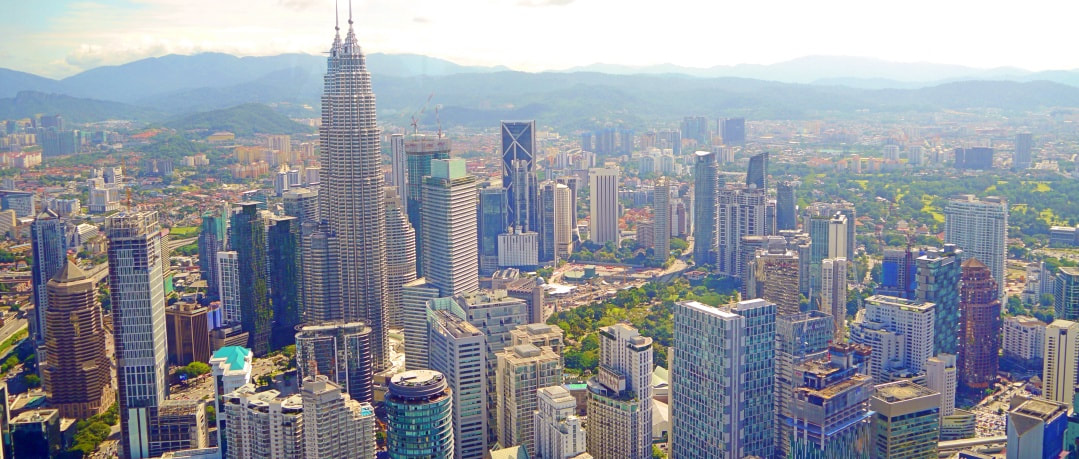 Malaysia is expected to enter a recession this year. Photo: Khalil Adis Consultancy. Malaysia is expected to enter a recession this year. Photo: Khalil Adis Consultancy. The Malaysian economy has bucked the trend growing by 0.7 per cent in the first quarter of 2020 from the 3.6 per cent growth in the previous quarter, data from the Department of Statistics Malaysia (DOSM) showed. However, the coronavirus pandemic has wreaked havoc in the job market with the unemployment rate increasing to 3.5 per cent compared to the 3.2 per cent recorded in the previous quarter. "The increase in the unemployment rate was mainly attributed to the adverse impact of the Movement Control Order (MCO) on the labour market," said chief statistician Dato' Sri Dr. Mohd Uzir Mahidin Meanwhile, employed persons in Malaysia increased to 1.6 per cent to 15.24 million persons in the first quarter of 2020. The DOSM noted that the highest unemployment rate in Malaysia was in 1986 at 7.4 per cent. Meanwhile, Bank Negara's Economic and Monetary Review 2019 stated that Malaysia's GDP growth is projected to be between -2.0 per cent to 0.5 per cent this year. Noting that 2020 is "an exceptionally challenging year for the global economy", Bank Negara said global growth is expected to contract. "While the Movement Control Order and measures to promote social distancing will dampen economic activity temporarily, they are necessary to contain the spread of the virus," Bank Negara said in a statement. In terms of the construction sector, DOSM's data showed that it contracted 7.9 per cent from 1.0 per cent in the preceding quarter. This is the lowest growth since the second quarter of 1999. Moving forward, Dato' Sri Dr. Mohd Uzir Mahidin predicted that Malaysia is projected to record an unemployment rate of between 3.5 per cent and 5.5 per cent this year due to the impact from COVID-19 With the World Health Organization warning that COVID-19 "may never go away", a new normal in the property sector will emerge influencing how Malaysians will live, work and play. Here are our top eight predictions arising from COVID-19: #1: Property market will be extremely muted in 2020 The uncertainty arising from COVID-19 will have an impact on consumer spending. Malaysia is expected to enter a recession this year resulting in job losses. As such, consumers will prefer to hold on to cash amid the uncertainties ahead. This will likely worsen the supply glut that Malaysia is already experiencing at the moment. According to data from the National Property and Information Centre (NAPIC), as of 2019, Malaysia has an existing stock of 5,727,814 residential units. In addition, it has an incoming supply and planned supply of 443,161 units and 441,309 units respectively bringing the total supply to a whopping 6,612,284 units. Developers with unsold inventory, especially in the medium to high-end segment, will be faced with a double whammy. They either have to drop prices to entice local buyers or continue to bleed as border controls imposed in the country means foreign investors are not allowed to enter Malaysia to view properties. Either way, the prognosis does not look very good for the market. Developers with strong branding, cash flow and who are offering affordable homes for locals will come out as winners amid this pandemic. As we speak, some developers are currently rolling out Ramadan and Hari Raya packages with a low deposit of RM1,000 to continue enticing buyers. However, whether or not buyers will be able to get a bank loan is another matter altogether. #2: Office space demand will decrease As businesses cut costs and working from home becomes the new norm, we can also expect a glut in office space supply to increase, particularly for Grade 'A' office. According to data from NAPIC, as of 2019, Malaysia has an existing stock of 2, 549 office buildings with 22, 590, 473 sq m of space. As more companies adopt the remote working model for good, existing office buildings will need to reconfigure their current space to factor in social distancing requirements. Operators of coworking spaces and landlords will thus need to refurbish existing office spaces to continue attracting tenants. New health requirements such as temperature takings and hand sanitisers may also translate to higher operating costs. Meanwhile, developers with incoming and planned office supply in the pipeline will need to go back to the drawing board to redesign their office plans resulting in reduced floor density. Data from NAPIC showed that Malaysia has an incoming and planned office supply of 51 buildings (2, 378, 131 sq m) and 15 buildings (398, 944) respectively as of 2019. This sector will face downward pressure in their asking prices as more companies adopt a work from home policy. Overall, the vacancy rate across Malaysia is expected to increase, further exacerbating the supply glut in the office market. Developers who have already secured corporate tenants for upcoming office buildings in Kuala Lumpur such as Tun Razak Exchange (TRX) and Merdeka 118, before COVID-19 struck, are likely to emerge stronger from the crisis. #3: Construction costs will increase due to late delivery of projects The MCO restrictions have resulted in construction delays across all sectors of the property market. During the MCO, construction sites were closed while materials which were sourced from overseas were impacted from the shut down of the global supply chain. With the MCO now eased, construction has now restarted but with temperature screenings, staggered working hours and social distancing in place. With construction now delayed by two to three months and with new safety requirements, we can expect construction costs to increase. This will likely be passed on to consumers. Whether or not such new projects can attract buyers with a higher per sq ft price remains to be seen due to the uncertainty in the economy and the job market. Buyers with cash in hand may instead look to the secondary market where prices are more realistic. #4: Tourism, food & beverage, transportation, travel, retail and hotel industries will be adversely affected The MCO has seen a knock-off effect on the tourism, food & beverage, travel, retail and hotel sectors due to international and local travel restrictions. According to the Malaysian Association of Hotels (MAH), approximately 15 per cent of hotels in the country may have to shut down their operations. Data from NAPIC showed that as of 2019, Malaysia has an existing stock of 3,404 hotels with 266, 972 rooms. Several of these hotels, located in tourism hot spots such as Kuala Lumpur, Ipoh and Melaka, have now ceased operations or are in the process of being auctioned off. With a planned and incoming supply of 114 hotels with 24,161 rooms and 74 hotels with 14,810 rooms respectively, we can expect demand for the hotel sector to remain muted. As it is, hotel operators are already facing stiff competition face from owners of Airbnb units. So, until a vaccine is found, the hotel and Airbnb sectors will continue to bleed. For hotels that are in the planned and incoming supply, they are faced with a dire situation to continue operations but where demand from tourists are far and few between. It remains to be seen whether the construction of such hotels will continue or if they will be cancelled altogether. Either way, they will be likely operating in the red. The only exception is hotels which have been gazetted as quarantine areas. For Airbnb owners, you might want to convert your units to long-term leases or student accommodations in the time being. #5: Retail sector will see many businesses cease operations While shopping centres can now operate, the damage is already done. The MCO that kicked in on March 18 means that businesses are greatly impacted as malls are forced to closed. Combined with running overheads such as cleaning costs, rent, wages, refurbishing damaged goods and other operating costs, shop owners are under great financial stress to either continue operation or wind down their business for good. Either way, human traffic will not return to normal due to social distancing requirements. As such, we can expect small to medium retail outlets and F&B outlets, particularly those leasing spaces at high-end malls to shutter. Instead, they will switch to online shopping. #6: Digital-related, food, healthcare, pharmaceutical and wellness sectors will thrive Digital-related sectors such as online shopping, delivery, technology and website hosting will thrive amid the pandemic as working from home now becomes the new norm. Developers and agents will need to adapt to changing market situation via contactless procedures such as conducting online viewings and meetings to close sales. For instance, online property portals such as iProperty.com are coming up with innovative ways to help their clients sell property online. In a post-pandemic world, Zoom meetings have now become ubiquitous. This is also an ideal time for individuals to start a side hustle such as small home-based business selling cookies online to supplement their income COVID-19 also means increased demand for food, healthcare, pharmaceutical and wellness industries. On March 27 2020, the Malaysian government announced a second stimulus package to combat COVID-19. For instance, an extra RM500 million has been allocated to purchase medical equipments, such as ventilators, personal protective, lab and ICU equipments. Meanwhile, another RM1 billion is allocated for the purchase of medical equipment and expertise from private healthcare services. #7: Tenants from healthcare industry will drive the rental market With RM1.5 billion in total allocated to support the healthcare sector, this presents good news for investors who are holding on to vacant Airbnb units or landlords who are located close to such industries to seek out such tenants. Having said that, the rental market in Malaysia is very soft at the moment so the rental income may or may not cover your mortgage. As data from NAPIC showed earlier, Malaysia has an existing stock of 5,727,814 residential units as of 2019. This will increase in 2020 arising from the supply from incoming and planned units. While some investors may have to top up cash, having a negative cash flow is better than leaving your units untenanted. Investors should seize this opportunity. #8: 2020 is about business consolidation As long as there is no vaccine found, business activities will never return to normal.
Forget about whatever business plans that you have planned in 2019. Instead, brace yourself for a long, cold, winter ahead. Consolidation will be the new normal for this year as many developers and industry players will focus on conserving cash. Leveraging on digital technology will be the new norm. We can expect pay cuts, hiring freezes and retrenchments as businesses cut losses on non-revenue generating departments. We have already seen certain developers doing this and establishing working from home permanently. This is the time to learn a new skill, read books and focus on self-development to continue staying relevant in your respective fields. With the virus now declared a global pandemic, it is as though we are forced us to slow down and reflect on what really matters. By Khalil Adis I woke up today feeling like the universe had pressed a reset button forcing the entire world to slow down. This came amid the rising number of COVID-19 infections outside Singapore. It all started from a nightmare I had over the weekend where I had dodged several black coloured snakes. I think they were meant to symbolise the coronavirus. Meanwhile, next door, I could hear my mother coughing loudly the entire night. I wondered if she had caught the virus and if so, will she survive? I had read that the elderly are particularly susceptible to the virus and the fatality rate is high. I also wondered if I had enough resources as a caregiver should she fall ill. It’s funny how it is usually the unmarried child who ends up taking care of their parents while their married siblings are noticeably absent. Then, it got me thinking if I had saved enough for my retirement and what will happen to me upon death. In introspective mode As morbid as it may seem, COVID-19 had forced me into a period of introspection. I found myself asking questions I never did. For a while, I was going through life on an autopilot mode, especially in this age of social media where everything seemed so fast-paced. As a result, I would often write articles in listicle format as readers nowadays want bite-sized news as opposed to analytical pieces. It’s a recurring problem fellow journalists had also complained about as they are increasingly being replaced by content marketers for ‘click-bait contents’. It felt as though we were not making an emotional connection with our readers. Yet, amid COVID-19, here I am writing on my blog as to how I would usually write in my journal entries. A global pandemic Last week, the World Health Organization (WHO) officially declared COVID-19 as a pandemic. Everything now appears to have ground to a screeching halt with the restricted movement order that kicked in on Wednesday in Malaysia and containment efforts within Singapore. The Singapore government on Sunday announced a new 14-day stay-home notice that will take effect from 11.59 pm on March 16 for all travellers with a recent travel history to ASEAN countries, Japan, Switzerland or the United Kingdom. This comes as Singapore and Malaysia are reporting a daily spike in new infections. Meanwhile, for the first time in Singapore’s history, Friday’s prayers were cancelled islandwide amid new clusters of infections that were linked to the Sri Petaling mosque outbreak last week. It will continue to be closed till March 26. It’s a strange feeling passing by mosques that remained closed. All these new measures will definitely have an impact on the economy and especially for small businesses. In the property market, events are now either being postponed or cancelled. My developer clients are now working from home. This will not bode well for Singapore and Malaysia as both countries are facing a supply glut in residential properties. It is as though the entire world is forced to slow down and connect with each other on a humane level. Moving forward My friends and relatives had previously admonished me for writing about what I go through saying it may not be good for business.
Somehow, during a time of crisis, sharing about our personal struggles seemed relevant as they make us more relatable as a human being. Do I worry about business amid COVID-19? Yes, of course. On a side note, as much as I would like to launch my book, this is very much dependent on getting sponsors on board. With the lull property market and developers cutting back on their marketing budget, it does appear challenging. It also does not help that Malaysian developers generally prefer to meet in person and do not respond well over e-mail. However, I now see it as a blessing amid what the world is going through at the moment - it is not a good time. Nevertheless, I do hope the book will see the light of day as it contains nuggets of useful information on the various train lines in Malaysia since I started researching about them in 2008. I wished a similar property guide book was written in Singapore when the city-state started building its MRT system in the 1980s. In the meantime, let us stay healthy, remain calm and vigilant during this difficult period.
Retailers in the hip Jalan Dhoby enclave in Johor Bahru say a sense of normalcy is slowly returning as locals are getting used to COVID-19.
By Khalil Adis
It used to take me almost an hour plus to take bus 160 from Jurong East to Johor Bahru.
However, since the COVID-19 outbreak, crossing the causeway is now a breeze due to the lull traffic. One destination of choice that is incredibly popular among Singaporeans is at the hip Jalan Dhoby enclave. Reminiscent of Georgetown in Penang, Jalan Dhoby is home to famous eateries making it a favourite haunt among tourists and photographers. “Come, come! Feel free to take photos. You can even take photos inside,” said the friendly auntie at Hiap Joo Bakery while taking my orders. Known for their flavourful banana cake and buns that are slow-cooked over wood in a traditional kiln, she admits that business has been gravely affected since the first coronavirus case was reported in Johor Bahru in January. “Yes, of course. We used to have a lot of Singaporean customers but they are all scared to come to JB now,” she said matter-of-factly while wrapping up two packets of freshly baked banana cakes. Despite the absence of Singaporeans, the bakery still remains popular among Johoreans as all their buns were already sold out by 2 pm. Over at Siva Hairdressing Salon, located nearby at Jalan Pahang, its owner shared a slightly different take. “Last two weeks was dead. Now, we are slowly seeing Singaporeans and tourists returning here,” said Mr Siva. A glance outside his shop confirmed this, although their numbers are still significantly lower than before. Meanwhile, next door, his daughter, who has just opened a chocolate shop called Act Spot, remained optimistic. “We have many chocolates to choose from which are produced and sourced locally. Hopefully, more Singaporeans will come here once the situation has improved,” said Ms Jaya. The lunchtime crowd at IT Roo Cafe located just opposite her shop is also slowly returning to normal albeit comprising mostly of regular local customers. The good news is getting a seat here is no longer a problem. In the past, you will have to wait till after 2 pm or sit alfresco style under the hot sun. Just opposite IT Roo Cafe is Salahuddin Bakery which sells buns, curry puffs and other confectionaries which are cooked in a kiln, just like at Hiap Joo Bakery. When asked if business has improved, the owner, who wishes to remain anonymous said that while it is not as good as before, customers are slowly returning. “People are slowly coming back. Like it, or not, life will have to go on,” he said. Over at Santai2, a massage parlour that specialises in traditional Malay massage, the shopkeeper said business is not as robust as before. “At first, human traffic was greatly affected by the road works which has now completed. After that, we were affected by the coronavirus outbreak. We used to see a lot of Singaporean customers,” she said. As I made my way to Al-Fayeed Cafe for dinner, business appeared busy as usual. Known for its mix of Western and local dishes as well as delectable shisha offerings, Al-Fayeed Cafe continues to attract a strong Johorean crowd, albeit slightly younger. “People here are a bit more laid back although they are aware of the coronavirus outbreak,” said a server. Judging from my recent day trip to Johor Bahru, it is clear that the unwavering spirit among Johoreans is alive and well as they remain steadfast in the face of COVID-19. If you want to avoid the crowd, this is now the best time to explore Johor Bahru. Just make sure you take the necessary precautions such as washing your hands frequently and wearing a face mask if you are unwell. Here are some of the places to explore: #1: Hiap Joo Bakery 13, Jalan Tan Hiok Nee, 80000 Johor Bahru, Johor, Malaysia
Hiap Joo Bakery is one of JB's best-kept secrets that it reportedly counts the Sultan of Johor as one of its fans.
Renowned for their coconut buns and freshly made banana cakes, many locals make a beeline for them. In fact, their coconut and kaya buns are so popular that they usually run out by noon. What makes Hiap Joo Bakery authentic is its old-school method of cake-baking which it inherited from its former British owner. All the cakes and buns are baked in a classic wooden kiln which leaves them with a unique charcoal aftertaste. If you still can't get enough of its freshly made cakes and buns, fret not! You can buy its very own kaya spread to savour it from the comfort of your home. #2: IT Roo Cafe 17, Jalan Dhoby, 80000 Johor Bahru, Johor, Malaysia
For lunch, head to IT Roo Cafe located just around the corner.
Touting itself as having "the best chicken chop in town", you can choose to have it either grilled or fried with a choice of mushroom or black pepper sauce. The dish comes complete with a serving of coleslaw and fries. Aside from its signature dish, IT Roo Cafe also serves up popular local dishes like fried rice and noodles. #3: Act Spot 6A Jalan Pahang, 80000, Johor Bahru, Johor, Malaysia
Act Spot is a local chocolatier that sells an assortment of flavoured chocolates such as hazelnut, cappuccino and tiramisu.
Produced and sourced locally, the chocolates are touted as a healthy alternative as they are less sweet, non oily and with zero trans fat. The chocolates come in an attractive packaging and are priced from RM10 onwards. #4: Salahuddin Bakery 26, Jalan Dhoby, 80000, Johor Bahru, Johor, Malaysia
Salahuddin Bakery is one of the oldest bakeries in Johor Bahru that has been around since 1937.
They specialise in triangular-shaped curry puffs that are filled generously with beef and potato fillings as well as coconut and red bean buns. Aside from its signature curry puffs, the bakery also sells an assortment of confectionaries. What makes Salahudin Bakery a draw is its old school method of baking inside a kiln which you cannot find elsewhere (except at Hiap Joo Bakery). Prices start from RM1.70. #5: Al-Fayeed Cafe Off Jalan Pahang, 80000, Johor Bahru, Johor, Malaysia
Fancy a serving of shisha?
Well, look no further than Al-Fayeed Cafe which is also located within walking distance. Prepared by tattoed servers with technicoloured dyed hair, there are many flavours to choose from with an option to have it served with ice. Al-Fayeed Cafe also serves up popular side dishes such as fries to go along with your shisha. For those who prefer a heartier portion, the cafe also offers a wide selection of Western and local dishes at very reasonable prices. Music can get a tad bit loud with popular hip-hop tunes and EDM club bangers blaring from the speakers. #6: Pasar Karat Jalan Segget, Bandar Johor Bahru, 80000, Johor Bahru, Johor, Malaysia
Stock up on those pomades in various fragrances or shop for handphone covers at this night market located just a stone throw's away from the heritage area.
Pasar Karat which means rusty market comes alive from 7 pm onwards and attracts a strong Johorean crowd. Selling just about anything from exotic pets to Malay kuehs, the night market gets especially busy during Ramadan as many would throng the market as they gear up for Hari Raya Aidilfitri. #7: Santai2
Offering foot massage and traditional Malay urut, Santai2 is a welcome respite after all those walking.
Foot massage starts from around RM45 while a full body traditional Malay urut is priced from RM65. Both male and female therapists are available. Singapore's retail and tourism industries appear to be reeling from the impact of COVID-19. Taken between 12 noon to 3 pm on 26 February 2020, human traffic at Orchard Road, Chinatown, Waterway Point, Tanjong Pagar, Raffles Place and Dhoby Ghaut has decreased significantly. By Khalil Adis When China sneezes, the entire world catches the flu. In this case, COVID-19 is already affecting the global economy resulting in supply crunch, travel bans, pay freeze and global retrenchments. Just recently, HSBC axed 35,000 staff as part of its global restructuring exercise on 18 February. Singapore, in particular, is vulnerable due to its open economy and small domestic market. Already reeling from the impact of the ongoing US-China trade war, the government has announced several measures under Budget 2020 to save jobs and to pass on rental rebates and waivers to affected tenants. Meanwhile, Temasek Holdings, CapitaLand and SMRT announced pay freeze and wage cuts while Singapore Airlines is freezing hiring. While the Singapore government has done a good job in containing the outbreak (62 recovered cases, 31 still in hospital), we are possibly faced with a global pandemic. According to the World Health Organization (WHO), as of 26 February, the number of new cases reported outside of China exceeded the number of new cases in China for the first time. For example, new cases are now emerging in Brazil, Iran, Pakistan, Greece, Georgia and Norway while South Korea and Italy are scrambling to contain the spread. In South Korea alone, the Korea Centers for Disease Control & Prevention (KCDC) said it reported an additional 334 new cases as of 27 February, bringing the total tally to 1,595. WHO added that COVID-19 has killed more than 2,700 people and infected at least 80,000 in 34 countries with the vast majority of cases in China. Should the situation gets even worse, there is a possibility of a deep and long recession ahead. Here are photos that were taken yesterday across Singapore amid the outbreak. |
Khalil AdisAn independent analysis from yours truly Archives
July 2023
Categories
All
|
100 Peck Seah Street
|
|
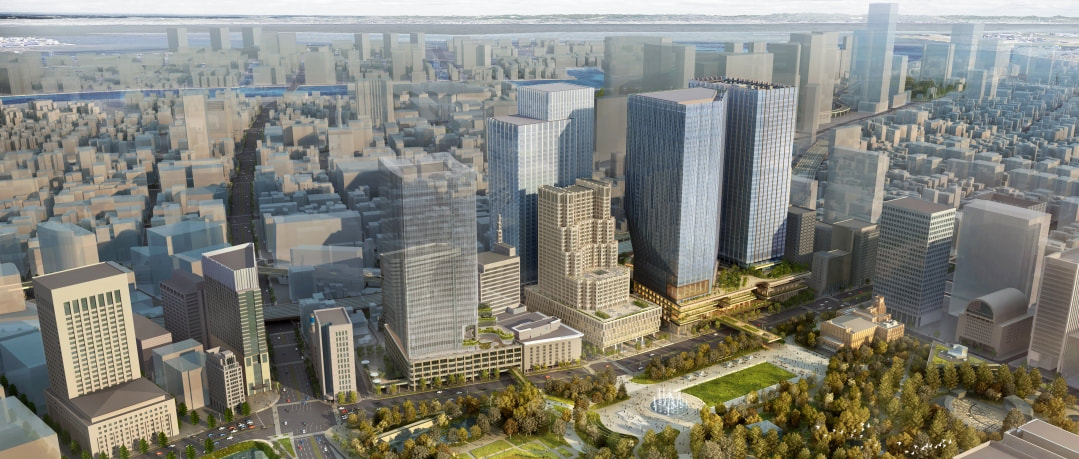
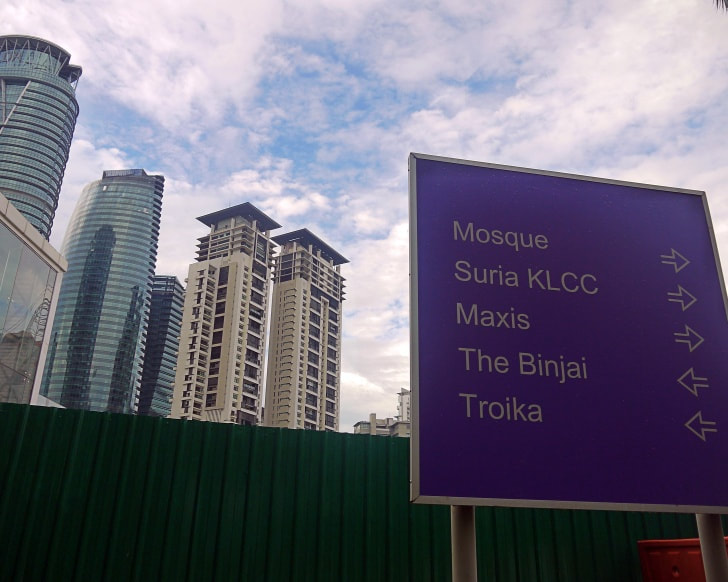

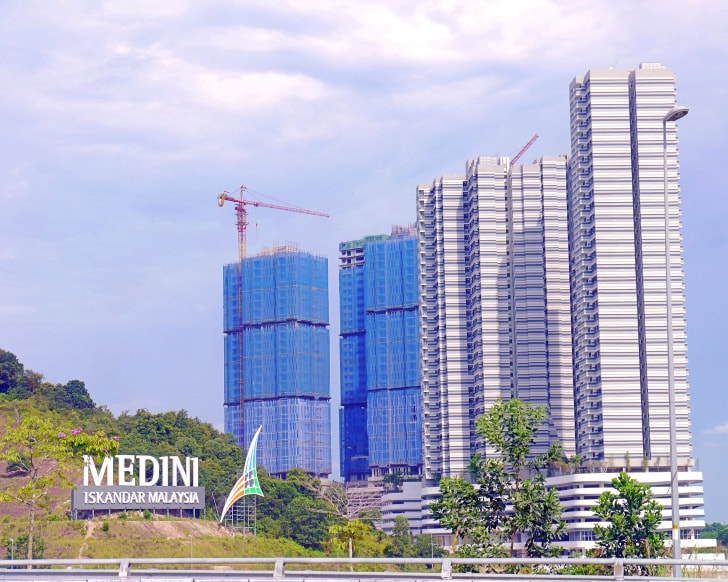
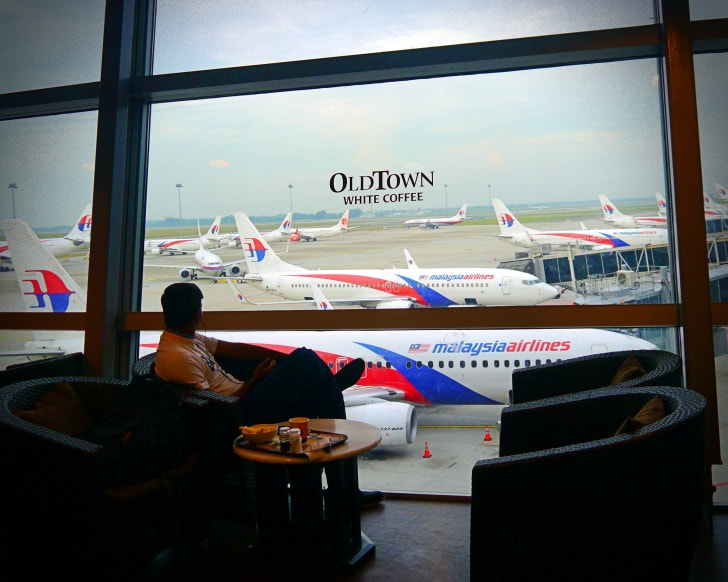
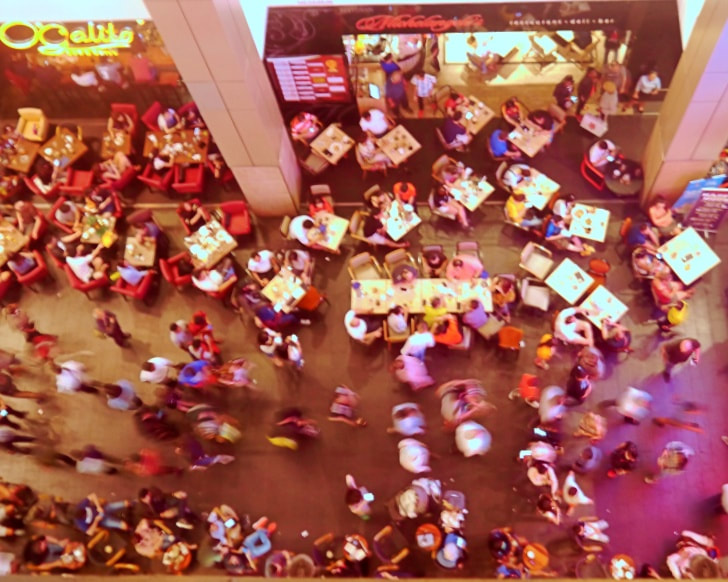
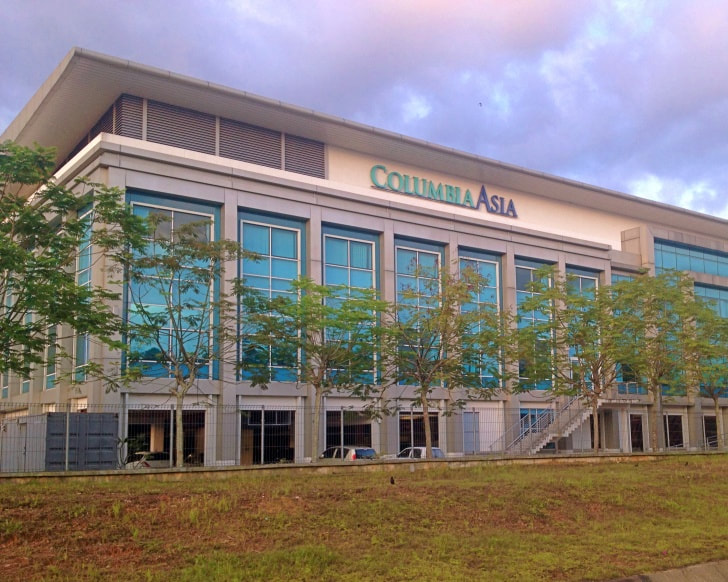
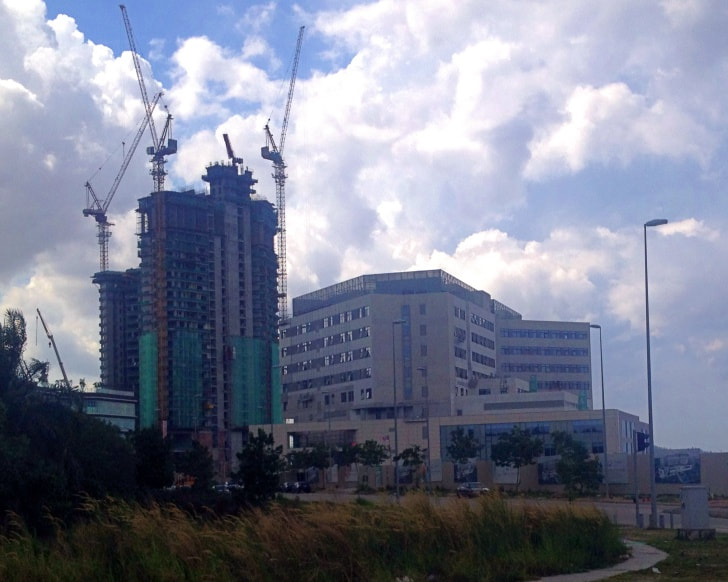
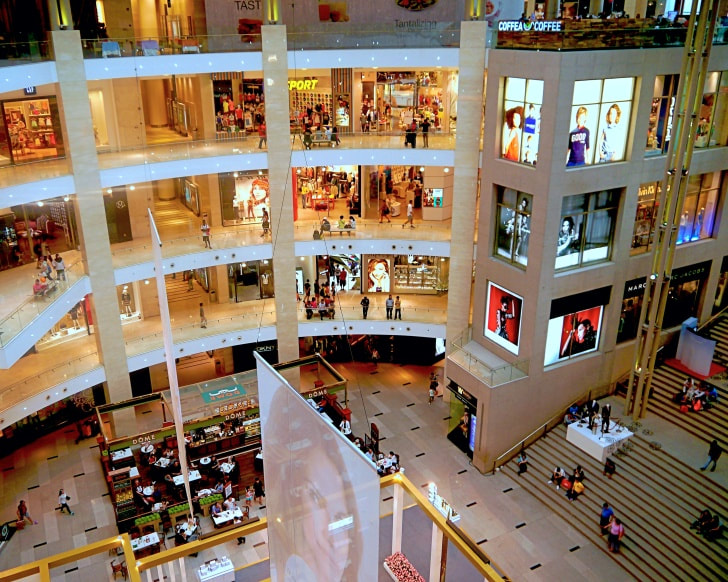
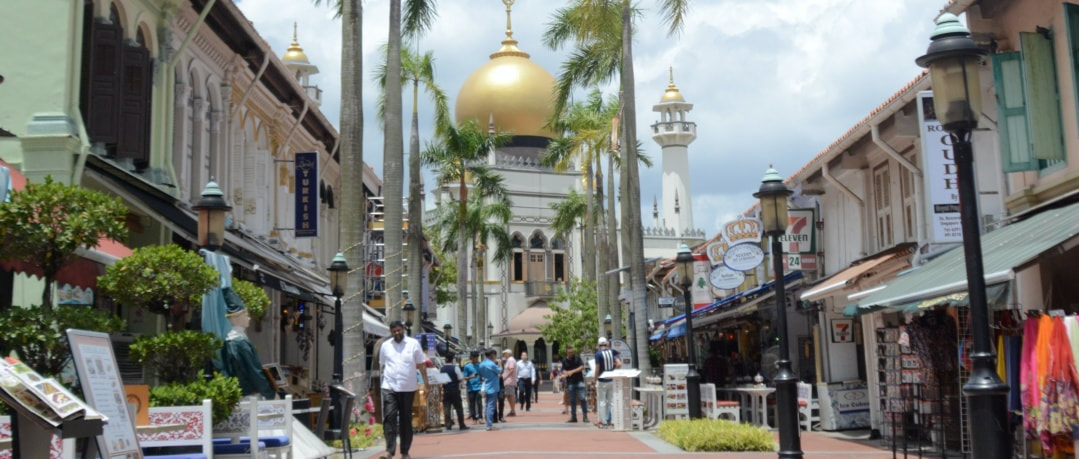
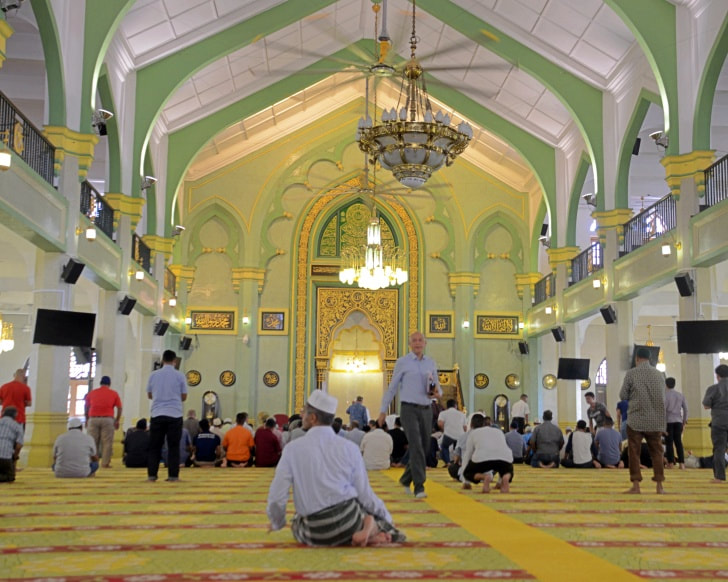
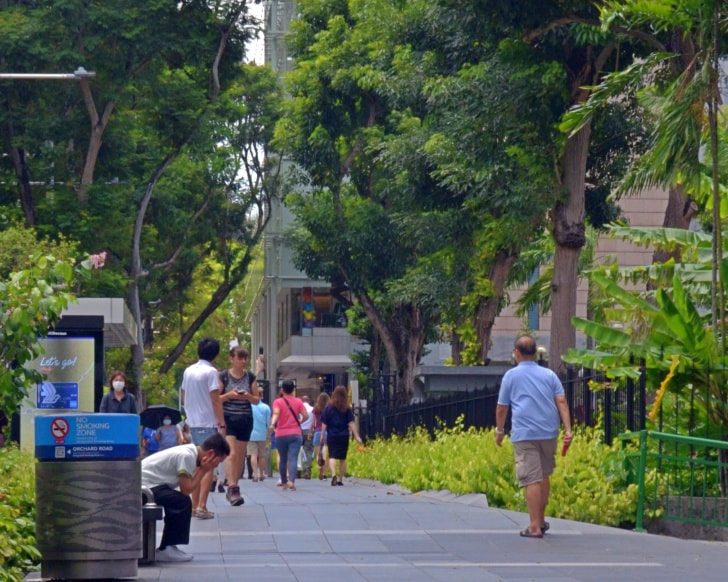
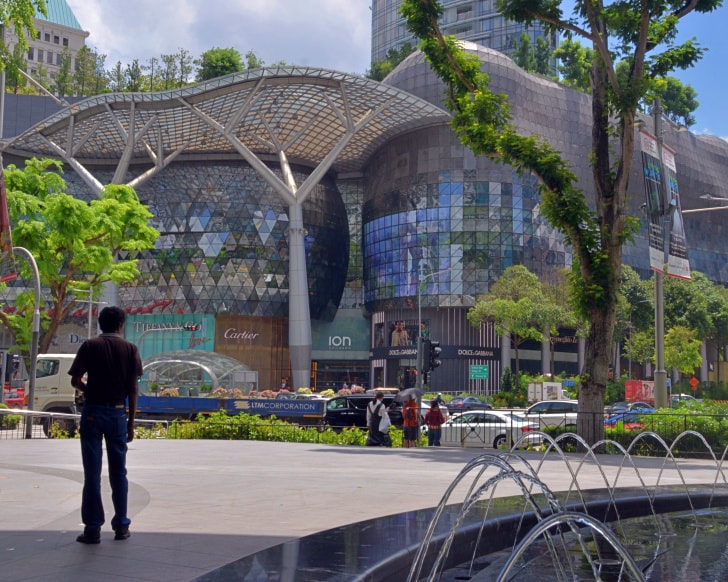
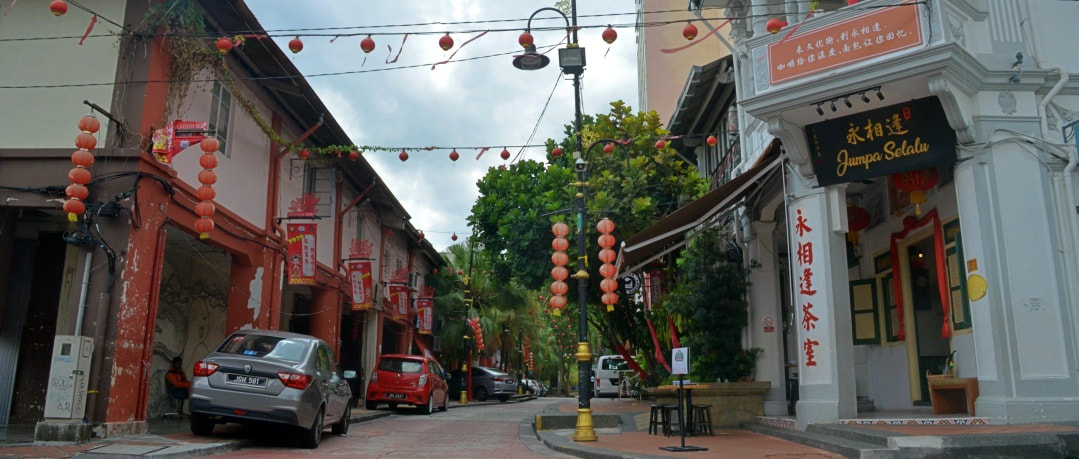
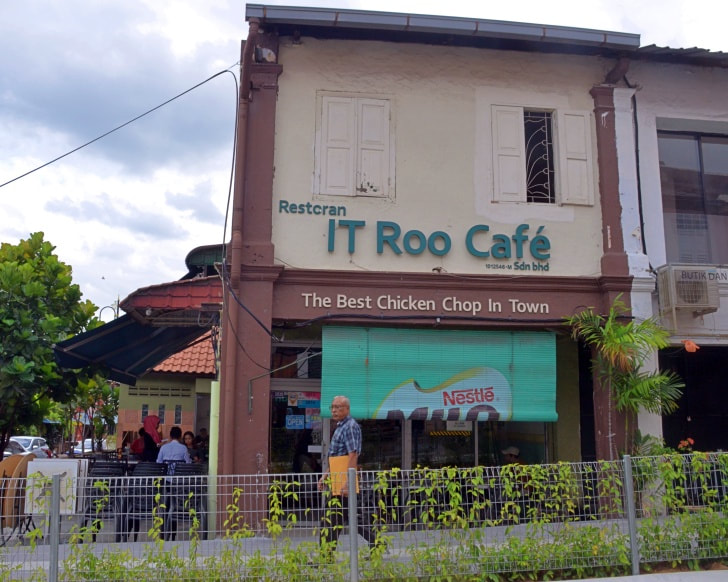

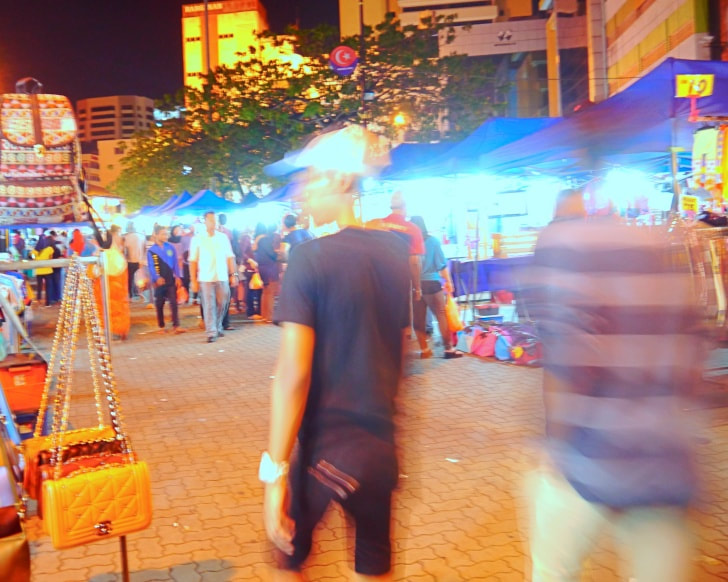
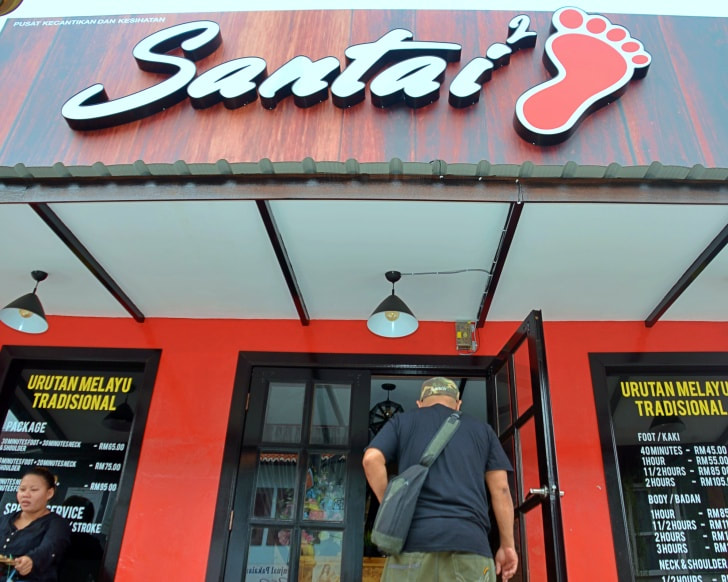

 RSS Feed
RSS Feed
